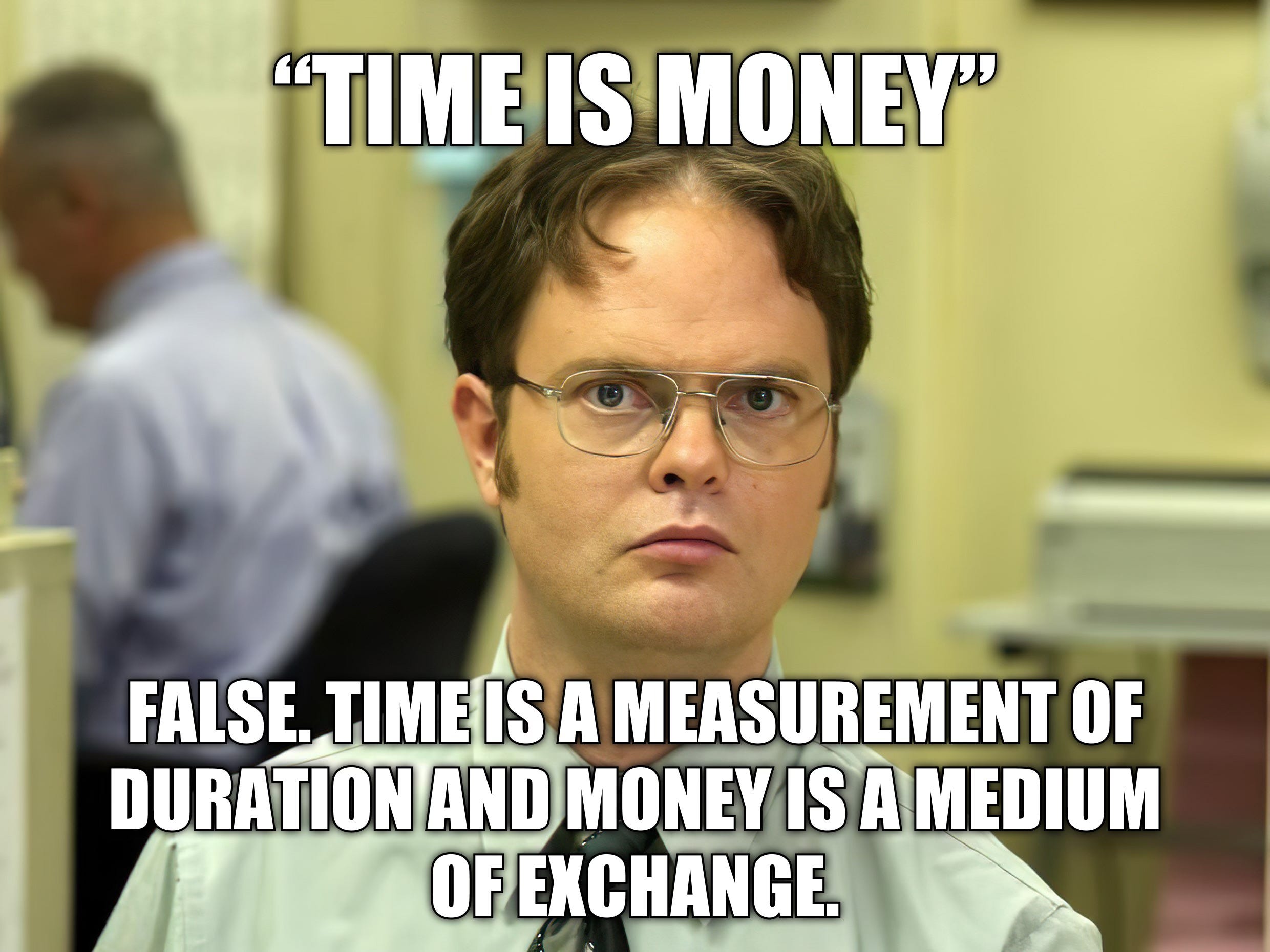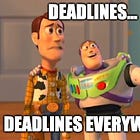The #1 question every business case should answer
The #1 question every business case should answerWhen you frame your recommendation in a way that gets heard, you increase the chances it gets adopted. Here's how.👋 Hey, it’s Wes. Welcome to my weekly newsletter where I share frameworks for becoming a sharper operator, rooted in my experience as an a16z-backed founder. If you’re interested in sponsoring this newsletter to reach 30,000+ thoughtful operators, fill out this form and I’ll share more. Read time: 8 minutes Intelligent people can be shockingly bad at pitching their ideas. A few years ago, one of my direct reports said, “I’m so frustrated. I flagged an issue to the CTO, but he didn’t care. I can barely keep it together and want to scream into a pillow. I don’t know what to do. Could you share how to get him to listen?” This was the first time my team member (let’s call him Evan) mentioned this issue, but he had clearly been frustrated for a while. I said, “First, I’m glad you brought this up because I never want you to suffer in silence—please speak up even sooner next time. Second, the CTO is usually pretty open to hearing about problems. It doesn’t sound like him to just ignore you.” So I did what I usually do in situations where I’m curious and need more information: I asked for primary data. “Could you share the doc you sent?” It turns out, Evan had written a two-page Google Doc describing the issue, but the doc was terrible. It was too detailed in the wrong ways, but not detailed enough in the right ways. It wasn’t clear what the problem was, or what he wanted the reader to do. If I had read it, I probably would have dismissed it too. When I talked to the CTO, he said, “I had no idea the issue was this bad. I don’t really remember him bringing this up, much less saying no to his request.” Evan tried to make a business case, but his write-up was lacking. How do you speak up so your manager or colleagues will listen? Every week, we make business cases at work. I’m defining a business case as any recommendation to pursue a business opportunity or solve a problem. A business case can be a 5-page document, 5 sentences in Slack, or a 5-minute phone call. The larger the project, the more you may need to make a comprehensive business case. But the underlying premise is the same: If you don’t explain why a problem matters, your colleagues won’t have the necessary information to decide how to support you. “How will this save money or make money?”While your circumstances may be unique, the underlying question driving all business cases is the same: How will this save money or make money? Businesses exist to make money by creating value for customers. The closer you are to generating revenue for your organization, the more leverage you have. Addressing this can be the difference between your idea being labeled as tactical vs strategic. If you play out the logic behind your recommendation, it’s very likely that your idea already makes or saves the company money. That’s great news. But you have to make this connection explicit. Ideally, you can quantify the impact, but even if you can’t, you’ll want to make the connection as concrete and obvious as possible. There are other incarnations of this underlying question of “how will your idea save money or make money for the company?” I’ll share a few other forms of this because they might spark different ideas for you: “How will this drive the business?” “Driving the business” is another way to say “making money for the business.” Not every tactic needs to be one step away from revenue, but you should be able to show clear logic for how an idea will eventually lead to revenue or increased leverage for the business. “How much is this costing the business?” Money is the most obvious cost, but money is also wasted time, lost brand equity, lower team morale, decrease in customer satisfaction, etc—all those lead to losing money. “What’s the frequency and magnitude of this problem?” If the problem happens every day and each time, the business almost collapses, it’s clearly worth handling. If it happens once in a while and is a minor irritation each time, it’s less important. Most problems are somewhere in between. If you think a problem is important to address, consider sharing the frequency/magnitude of it. “What bad things happen if we don’t do this? What good things happen if we do?” I call this framework “Bad Things / Good Things.” It’s one of my favorites and I use it often. Some people are more compelled by fear of loss and want to mitigate downside risk, while others care more about new gains and upside. The great thing about this framework is it addresses both, so you’re covered regardless. “Why now?” Not all problems are worth solving. Businesses are basically one problem after another. When you solve a problem and reach a new level, you unlock new problems. Because you have limited resources and never-ending problems, you need to focus on solving the most important problems first. The question isn’t “Is this a problem?” but rather, “Why now with solving this problem?” “Why is the juice worth the squeeze?” This is about upside and leverage. I’ve said no to many ideas that seemed good on the surface, but were too much effort for not enough payoff. For example, your startup hosting an in-person event (like Dreamforce or WWDC) might make sense in the future. But early on, there are probably a dozen ideas that are higher ROI for attracting customers, developers, or building a community around your business. “How does this make our customer’s life better?” When you only frame in terms of dollars gained or lost for the company, it can sound a bit Machiavellian. Talking about how you improve the customer’s life is more customer-centric, less company-centric. But to be clear, happier customers will stay around and continue buying from you, which means growing the business. “How does this get us closer to our team or company goal?” Frame your idea as a means to an end of achieving the team/company growth goals. Putting it all together, here’s an example of what a business case could look like for flagging a problem and how much it’s costing the company:
Phrases to show how a problem is costing moneyDon’t only say “this costs us money.” Share evidence about HOW a problem is costing money, including quantifying the amount or painting a picture of why the problem is expensive. Here are phrases to help your audience feel the pain:
Each example above leads to costing the company money. Share your logic, evidence, and rationaleWhen you share your thought process, you allow your colleagues to discuss and debate an idea with more specificity. If you are vague, your audience doesn’t have enough information to validate what you’re saying. They may toss out your entire idea, when actually, 80% of your underlying insight was solid and can be explored through a different tactic. Flagging a problem you believe is worth addressing: 🚫 Lazy thinking: “Hey boss, x is a problem. [silence]” ✅ Rigorous thinking: "Hey boss, x is a problem because [why this is a problem and what it’s costing the company]. I’m not 100% sure what to do yet, but my initial hunch is we should do ____ because [your logic and rationale].” Proposing an idea you believe is worth pursing: 🚫 Lazy thinking: “Hey boss, can we do [random idea]?” ✅ Rigorous thinking: "Hey boss, given our goal of ___, I recommend we do [this idea] because [insight about the market, customers, category]. It's likely to work and is worth the time/budget because ___. The potential risks and reasons not to do this are ___. But we can minimize the risk with a small experiment by doing ___.” Satisfying the stranger reading your recommendationRemember my direct report, Evan? His original lackluster business case wasn’t due to his ability or intelligence—he was a bit too close to the issue to be able to zoom out, and more importantly, he didn’t know how to explain the situation so someone else could easily understand. Once he used the frameworks above, he got the CTO to take action and discuss next steps. When we pitch our ideas, we often forget that other people are not us—they haven’t lived this problem, thought about the solution over time, or been immersed in the context. We state our recommendation, then expect the rightness of our recommendation to be obvious. I love this quote from Paul Graham on why it’s hard to put our ideas into words:
Of the things you think are super obvious in your own head, more often than not, it’s not that obvious to other people. Remember: It’s up to you to connect the dots. When you do, you’ll reap the benefits of faster buy-in, fewer obstacles, and more ease with getting heard. I’d love to get your help growing our community of thoughtful, rigorous operators. If you enjoyed this post, consider taking a moment to:
Thanks for being here, PS See you next Wednesday at 8am ET. If you’re loving this and want to binge-read, check out these other essays on framing your ideas. |
Older messages
Super Specific Feedback: How to give actionable feedback on work output
Monday, March 4, 2024
Every piece of work output is an opportunity to share what you notice and level up your team's judgment. ͏ ͏ ͏ ͏ ͏ ͏ ͏ ͏ ͏ ͏ ͏ ͏ ͏ ͏ ͏ ͏ ͏ ͏ ͏ ͏ ͏ ͏ ͏
You Might Also Like
🚀 Ready to scale? Apply now for the TinySeed SaaS Accelerator
Friday, February 14, 2025
What could $120K+ in funding do for your business?
📂 How to find a technical cofounder
Friday, February 14, 2025
If you're a marketer looking to become a founder, this newsletter is for you. Starting a startup alone is hard. Very hard. Even as someone who learned to code, I still believe that the
AI Impact Curves
Friday, February 14, 2025
Tomasz Tunguz Venture Capitalist If you were forwarded this newsletter, and you'd like to receive it in the future, subscribe here. AI Impact Curves What is the impact of AI across different
15 Silicon Valley Startups Raised $302 Million - Week of February 10, 2025
Friday, February 14, 2025
💕 AI's Power Couple 💰 How Stablecoins Could Drive the Dollar 🚚 USPS Halts China Inbound Packages for 12 Hours 💲 No One Knows How to Price AI Tools 💰 Blackrock & G42 on Financing AI
The Rewrite and Hybrid Favoritism 🤫
Friday, February 14, 2025
Dogs, Yay. Humans, Nay͏ ͏ ͏ ͏ ͏ ͏ ͏ ͏ ͏ ͏ ͏ ͏ ͏ ͏ ͏ ͏ ͏ ͏ ͏ ͏ ͏ ͏ ͏ ͏ ͏ ͏ ͏ ͏ ͏ ͏ ͏ ͏ ͏ ͏ ͏ ͏ ͏ ͏ ͏ ͏ ͏ ͏ ͏ ͏ ͏ ͏ ͏ ͏ ͏ ͏ ͏ ͏ ͏ ͏ ͏ ͏ ͏ ͏ ͏ ͏
🦄 AI product creation marketplace
Friday, February 14, 2025
Arcade is an AI-powered platform and marketplace that lets you design and create custom products, like jewelry.
Crazy week
Friday, February 14, 2025
Crazy week. ͏ ͏ ͏ ͏ ͏ ͏ ͏ ͏ ͏ ͏ ͏ ͏ ͏ ͏ ͏ ͏ ͏ ͏ ͏ ͏ ͏ ͏ ͏ ͏ ͏ ͏ ͏ ͏ ͏ ͏ ͏ ͏ ͏ ͏ ͏ ͏ ͏ ͏ ͏ ͏ ͏ ͏ ͏ ͏ ͏ ͏ ͏ ͏ ͏ ͏ ͏ ͏ ͏ ͏ ͏ ͏ ͏ ͏ ͏ ͏ ͏ ͏ ͏ ͏ ͏ ͏ ͏ ͏ ͏ ͏ ͏ ͏ ͏ ͏ ͏ ͏ ͏ ͏ ͏ ͏ ͏ ͏ ͏ ͏ ͏ ͏ ͏ ͏ ͏ ͏ ͏ ͏ ͏ ͏ ͏
join me: 6 trends shaping the AI landscape in 2025
Friday, February 14, 2025
this is tomorrow Hi there, Isabelle here, Senior Editor & Analyst at CB Insights. Tomorrow, I'll be breaking down the biggest shifts in AI – from the M&A surge to the deals fueling the
Six Startups to Watch
Friday, February 14, 2025
AI wrappers, DNA sequencing, fintech super-apps, and more. ͏ ͏ ͏ ͏ ͏ ͏ ͏ ͏ ͏ ͏ ͏ ͏ ͏ ͏ ͏ ͏ ͏ ͏ ͏ ͏ ͏ ͏ ͏ ͏ ͏ ͏ ͏ ͏ ͏ ͏ ͏ ͏ ͏ ͏ ͏ ͏ ͏ ͏ ͏ ͏ ͏ ͏ ͏ ͏ ͏ ͏ ͏ ͏ ͏ ͏ ͏ ͏ ͏ ͏ ͏ ͏ ͏ ͏ ͏ ͏ ͏ ͏ ͏ ͏ ͏ ͏ ͏ ͏ ͏ ͏ ͏
How Will AI-Native Games Work? Well, Now We Know.
Friday, February 14, 2025
A Deep Dive Into Simcluster ͏ ͏ ͏ ͏ ͏ ͏ ͏ ͏ ͏ ͏ ͏ ͏ ͏ ͏ ͏ ͏ ͏ ͏ ͏ ͏ ͏ ͏ ͏ ͏ ͏ ͏ ͏ ͏ ͏ ͏ ͏ ͏ ͏ ͏ ͏ ͏ ͏ ͏ ͏ ͏ ͏ ͏ ͏ ͏ ͏ ͏ ͏ ͏ ͏ ͏ ͏ ͏ ͏ ͏ ͏ ͏ ͏ ͏ ͏ ͏ ͏ ͏ ͏ ͏ ͏ ͏ ͏ ͏ ͏ ͏ ͏ ͏ ͏ ͏ ͏ ͏ ͏ ͏ ͏ ͏ ͏ ͏ ͏ ͏ ͏ ͏ ͏



